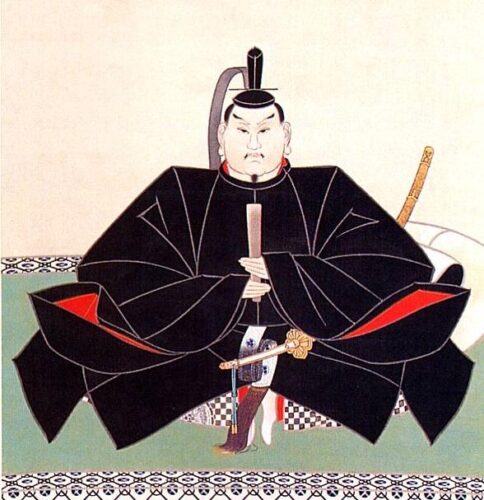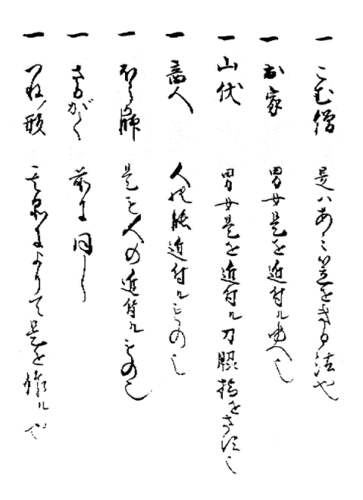Nishinomaru and Fukiage, residences of the three Tokugawa families (17th century).
The Shōninki is an intriguing manuscript that offers an unparalleled insight into the realm of the shinobi, also known as ninja, during the medieval era of Japan. It was penned in 1681 by Natori Masatake, a samurai and a ninja, who was the esteemed grandmaster of Kishu-Ryu Ninjutsu, a school of Ninjutsu that thrived during the Edo period. The Shōninki is one of the three principal surviving texts on the art of the ninja, the other two being the Bansenshukai and Ninpiden.
Kishu-Ryu Ninjutsu was a comprehensive school of martial arts and espionage, based on the Kusunoki Gungaku (Japanese arts of war), and not just shinobi no jutsu alone. The Kishu-Ryu school is associated with the former province of Kishu, located south of Iga, and is sometimes regarded as a derivative branch of the Iga-Ryu. Today, Kishu corresponds to the prefecture of Wakayama (near Kii peninsula). Geographically, all of the ancient centers connected with the ninja are located in the current region of Kansai (or Kinki).
Masatake was a samurai hailing from the Kii lineage of the Tokugawa clan, a family that had direct ties to the shōgun. His family became part of the clan in 1654, and his father, Natori Masatomi, was in the service of Tokugawa Yorinobu, heading covert military operations. Initially, Masatake served as a page, but upon reaching maturity, he became a foot soldier for the clan. Despite his elder brother inheriting their father’s position, Masatake ascended the ranks to become an ogaban, a high-ranking retainer. The exact date of his death remains unknown, but some sources suggest it might have been in 1708.

In the Shōninki, Masatake documented his reflections on the role and techniques of the ninja, as well as the teachings of his family’s martial arts, with a primary focus on moral character. The Shōninki is structured into a preface (Jo), three scrolls (Shomaki, Chumaki, Gemaki), and an epilogue (Okusho), each section shedding light on different facets of the ninja’s craft.
Preface (Jo)
In the preface, Natori Masatake discusses the different types of spies and the principles of espionage. This section sets the stage for the detailed teachings that follow, emphasizing the importance of stealth, cunning, and intelligence in the work of a ninja.
First Scroll (Shomaki)
The first scroll addresses basic skills such as disguise, concealment, house-breaking, and information gathering. These are the fundamental techniques that every ninja must master, forming the backbone of their clandestine operations.

Second Scroll (Chumaki)
The second part of the Shōninki deals with defense against enemy spies, understanding human nature, physiognomy, recognizing and eliciting the true intentions of people, and laying false trails and clues. This section underscores the psychological aspect of the shinobi’s work, highlighting the importance of deception, manipulation, and counterintelligence.
Third Scroll (Gemaki)
The final scroll is concerned with one’s own emotional states as well as those of other people. This part of the Shōninki emphasizes the importance of emotional intelligence in the work of a ninjai, teaching the reader how to control their own emotions and exploit those of others.
Legacy and Influence
The Shōninki continues to be a valuable resource for those interested in the history and techniques of the ninja. Its teachings have been translated and interpreted by various authors, making the wisdom of the ninja accessible to a modern audience.
The Shōninki is a testimonial to the sophistication and complexity of the ninja’s craft. It offers a rare and detailed look into the world of espionage during Japan’s medieval period, revealing the depth of thought, skill, and cunning required to excel as a ninja.
*The views and opinions expressed on this website are solely those of the original authors and contributors. These views and opinions do not necessarily represent those of Spotter Up Magazine, the administrative staff, and/or any/all contributors to this site.

